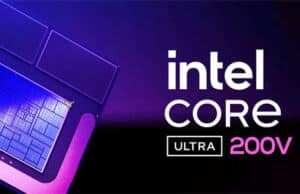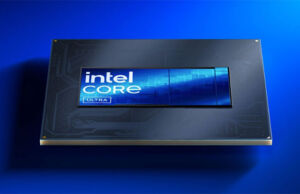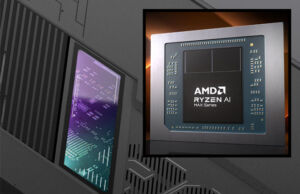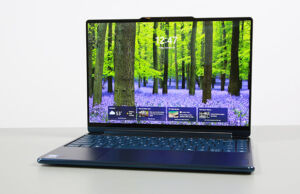Table of Contents
Early into 2022, DDR5 memory is going to quickly make its way into the mobile space, with the laptops built on Intel’s Alder Lake (12th-gen) and AMD’s Rembrandt (6000 series, Zen3+) hardware platforms.
Unlike on desktop PCs where you can opt for either DDR4 or DDR5 RAM on these platforms, with most notebooks you will not be given a choice. In fact, I’d expect an ample shift to DDR5 in the higher-tier classes of premium/performance laptops, and perhaps some DDR4 options still available in the mid-tier and budget segments.
Even so, there are a few aspects I wanted to touch on which will help you decide whether a computer with DDR5 memory is the way to go for you, and what the benefits and the downsides are over a DDR4 product. I’m not a hardware expert, so I would appreciate your input and feedback in the comments section at the end of the article.
DDR4 vs DDR5 memory on laptops
Most recent laptops selling today ship with either LPDDR4-4266 or LPDDR4x-4266 on select ultraportable platforms, or DDR4-2133 to DDR4-3200 on everything else. For 2021 performance/gaming laptops, though, DDR4-3200 CL22 memory is what you’ll normally get.
With DDR5, the memory transitions into LPDDR5-5200 or up to LPDDR5x-8533 (available later on) for portable platforms, and DDR5-4800 (CL40) with the first generation of performance/gaming models expected in early-2022, and up to DDR-6000 with later models available in 2023.
There are multiple differences between the DDR4 and DDR5 RAM, and not just physically, with a different aspect, connector, and pin key for the DDR5 memory DIMMs. This video from Linus Tech Tips does an excellent job of explaining them (he covers desktop memory modules, but the principles are similar for mobile SO-DIMM DDR5 memory).
In just a few words, DDR5 memory runs at a lower voltage (1.1V vs 1.2V) than DDR4 and integrates the PMIC on the actual module. PMIC stands for Power Management Integrated Circuit and its role is to convert the 5V supplied by the motherboard to the 1.1 v required by the memory module. With DDR4, the PMIC was part of the motherboard and has now been moved on the memory chip in order to allow the 50% faster transfer speeds possible with DDR5 (4800 MT/s, vs 3200 MT/s).
In addition to that, DDR5 memory DIMMs come with twice the amount of actual ICs (memory chips) for a given capacity (grouped in multiple x4/x8/x16 banks/ranks layouts), as well as 2x 32-bit bus connections per rank, replacing the 1x 64-bit connection used for DDR4. All these are also explained in the video above, around minute 5:30.
The more complex design is going to most likely translate in higher-cost, though, especially at launch, factoring in the current chip-shortage situation and an expected early adaptor tax.
Question is, how is the transition to DDR5 going to impact the performance and even the efficiency of 2022-gen laptops?
Sure, DDR5 memory runs at higher transfer speeds and frequency, but that’s only part of the whole picture, as it also runs at a higher latency. Overall, though, DDR5 offers an improvement in memory bandwidth, paired with the 2x increase in bus connections, which should result in increased performance especially in heavy multi-threaded loads. We’ll have to wait for reviews for a complete picture of what to expect, but in the meantime, you could look into some of the early DDR4 vs DDR5 desktop tests, such as this one from Anandtech, on an Intel Alder Lake Core i9-12900K platform.
DDR5 impact on ultrabooks
When it comes to ultraportable designs, I’m primarily interested in the potential improvements in efficiency for the DDR5 models expected in 2022/2023.
The DDR5 memory by itself is only going to play a minor role at it, through the slightly lower required voltage, as I expect the significant impact to come from the Big.Little architecture available with the Intel Alder Lake and Raptor Lake platforms. In the past, the AMD 5000 Ryzen U platforms proved to be more efficient with everyday use, and I’m looking forward to the Alder Lake vs Rembrandt matchup next year.
The transition to DDR5 should also impact the performance in demanding multi-core loads, as well as potentially the graphics performance of the integrated Iris/Vega GPUs, thanks to the increase in bandwidth and bus spread. Both Intel and AMD are advertising faster iGPUs for their 2022 low-power platforms, and over here I’m especially looking forward to the RDNA2 based Vega chips and whether they’ll end up competitive against Intel’s Iris Xe iGPUs in the AlderLake U15 and U28 hardware.
DDR5 impact on performance/gaming laptops
DDR5 memory should play a bigger role on this kind of notebooks, based on the tests and benchmarks we’ve seen so far in the desktop space on Alder Lake PCs, especially with memory-intensive workloads.
Mobile Alder Lake is going to differ from desktop Alder Lake, though.
For instance, the desktop Core i7-12700K is 8 Performance Cores and 4 Efficiency Cores, for a total of 20 Threads (2×8 +4), all running at 125W standard TDP. In comparison, the top Core i9-12900HK and the mainstream Core i7-112700H are both 6 Performance Cores and 8 Efficiency cores, for still a total of 20 Threads, but only a 45W base TDP. And since we know how power-hungry modern hardware can get, expect the performance to differ significantly between the various implementations, based on the power design of each product. The higher the power, the higher the CPU performance, and the potential benefit of switching to DDR5 in specific multi-threaded loads, and that should be the case on both the Intel Core and the AMD Ryzen implementations of this generation.
However, expect DDR5 memory to have a smaller direct impact with games, with variations in some titles that are more memory dependant. Still, since these 2022 performance notebooks are also getting updated processors and especially graphics chips, we can expect an overall increase in framerates over the 2021 models. How much of an increase? No way to tell, for now, you’ll have to wait for our reviews.
Finally, there is one other aspect we should touch on: with the transition to the denser DDR5 modules and as the technology matures, I expect that 32 and 64 GB memory configurations to become wider spread and more accessible, with the ability to install up to 2x 32 GB DIMMs in many products. Furthermore, 128 GB of memory is also going to become a possibility on certain high-performance laptops, so if your workflows would benefit from high amounts of RAM, DDR5 products are something that you should look forward to.
Some final thoughts
All in all, I wouldn’t fret much about the transition the DDR5 memory on laptops, mostly because I don’t expect manufacturers to give us much of a choice: higher-tier platforms will transition to DDR5 in mass, and as a result, the new memory will come bundled with the updated hardware. And with an expected increase in overall cost.
What you do get with the transition to DDR5 is the possibility to configure most laptops with 32 or 64 GB of memory, far easier than with DDR4 configurations, and eventually at lower costs.
From what we know so far, though, DDR5 should make a performance impact in specific multi-threaded demanding loads, especially when paired with higher-tier processors with a higher number of threads. That aside, I’d also expect improved battery life for 2022 performance laptops, but not necessarily as a result of switching over to DDR5 memory, but mostly thanks to the update in CPU designs.
I would keep an eye on any potential performance differences between the different rank/bank DDR5 memory variants that will make it into retail products, knowing the whole Single-Rank Dual-Rank debacle earlier in the year, especially on the memory-dependant AMD platforms. Hopefully, this transition won’t end up confusing for the everyday buyer.
I also plan on updating this article in a few months if manufacturers decide to offer the possibility to go either DDR4 or DDR5 in the mid-range segments next year – that’s where the comparison would make the most sense. I’d expect better value for the money with the DDR4 variants, especially for daily use and gaming, but I’ll refrain from any conclusions until those products are actually available in stores.












